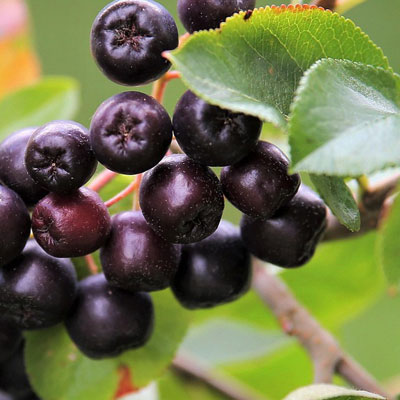Aronia Berries
Aronia berries (Aronia melanocarpa) are small, round, dark purple berries, growing as a deciduous shrub native to North America. They are also known as chokeberries because of their sharp, mouth-drying effect. While the fresh berry may be tart and highly astringent, it mellows when cooked or sweetened, making it a perfect and highly nutritional addition to many recipes. The berries are harvested in late September and early October.
Nutrition and Health Benefits
Aronia berries are nutrient dense with minimal calories. They are high in antioxidants, (anthocyanins and flavonoids), nearly three times that of blueberries; and are also an excellent source of fiber, vitamins A, C, E, and K, as well as essential minerals like potassium and manganese. Aronia berries provide one of the richest sources of plant antioxidants, offering many health-promoting properties and are therefore are considered to be among the most powerful superfoods, in the company of acai, goji berries and blueberries.

History of Aronia Berries
Aronia is a genus of deciduous shrubs, the chokeberries, in the family Rosaceae native to North America and most commonly found in wet woods and swamps. They have been used by Native American tribes for hundreds of years before becoming commercially cultivated, to make teas and treat colds as well as to eat, and even as a meat preservative due to their antibacterial and antifungal properties. As Native Americans were displaced or relocated, this knowledge died out and wasn’t rediscovered until the 20th Century.
Uses of Aronia Berries
Due to Aronia berries’ high level of antioxidants, they are not the best when eaten raw. However, they are great when used in food, beverage and supplement recipes. Whether you are looking to add a tangy twist to your smoothies, create mouthwatering jams and jellies, bake delectable desserts, or introduce a special ingredient in fruit wine, Aronia berries are the perfect addition to many recipes. Their astringent flavor profile adds depth and complexity to a wide range of culinary creations. They pair well with sweet, complementary ingredients like other berries, citrus fruits, and spices. They also work surprisingly well in both savory and sweet dishes, especially when processed into jams, sauces, or baked goods.


